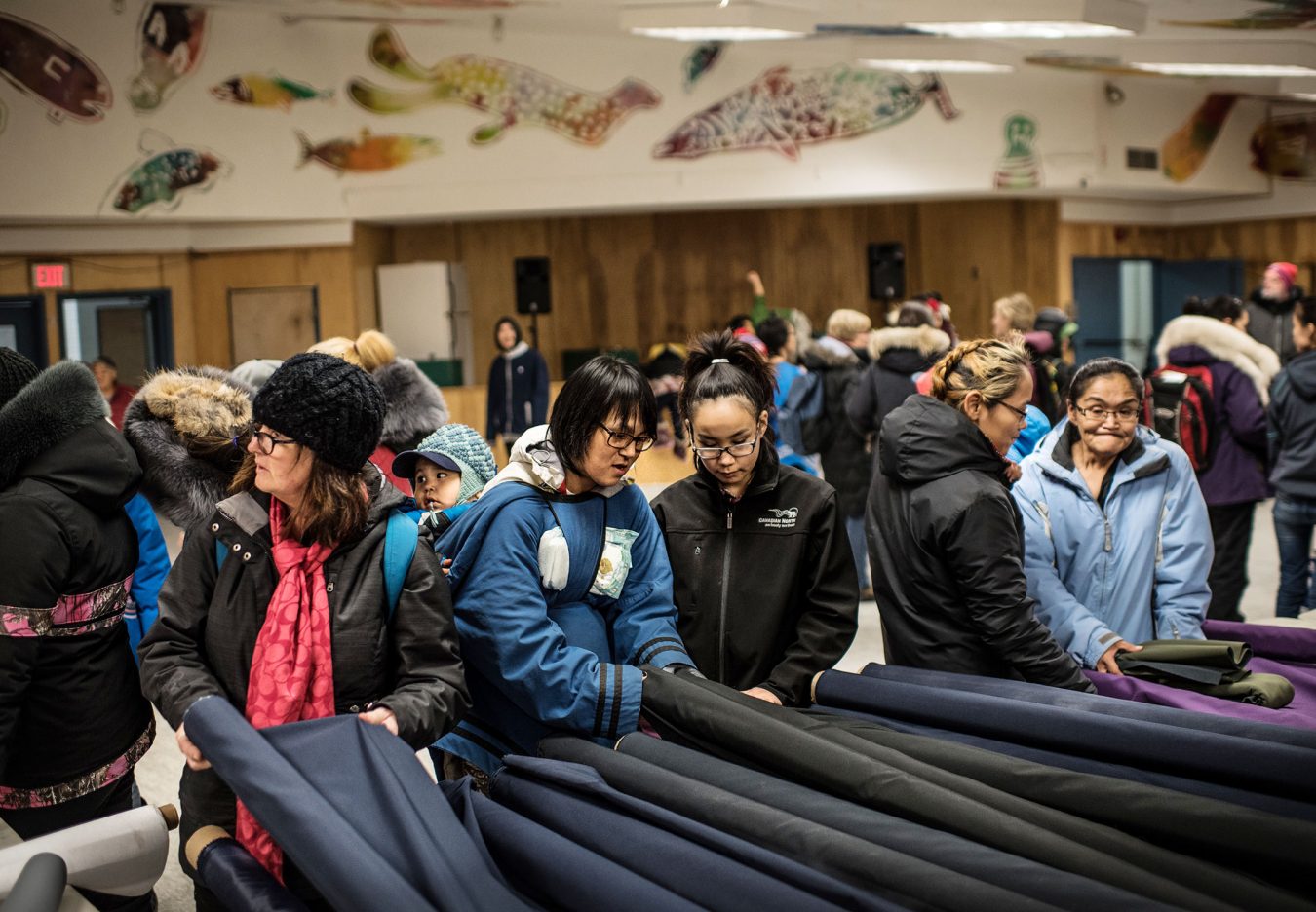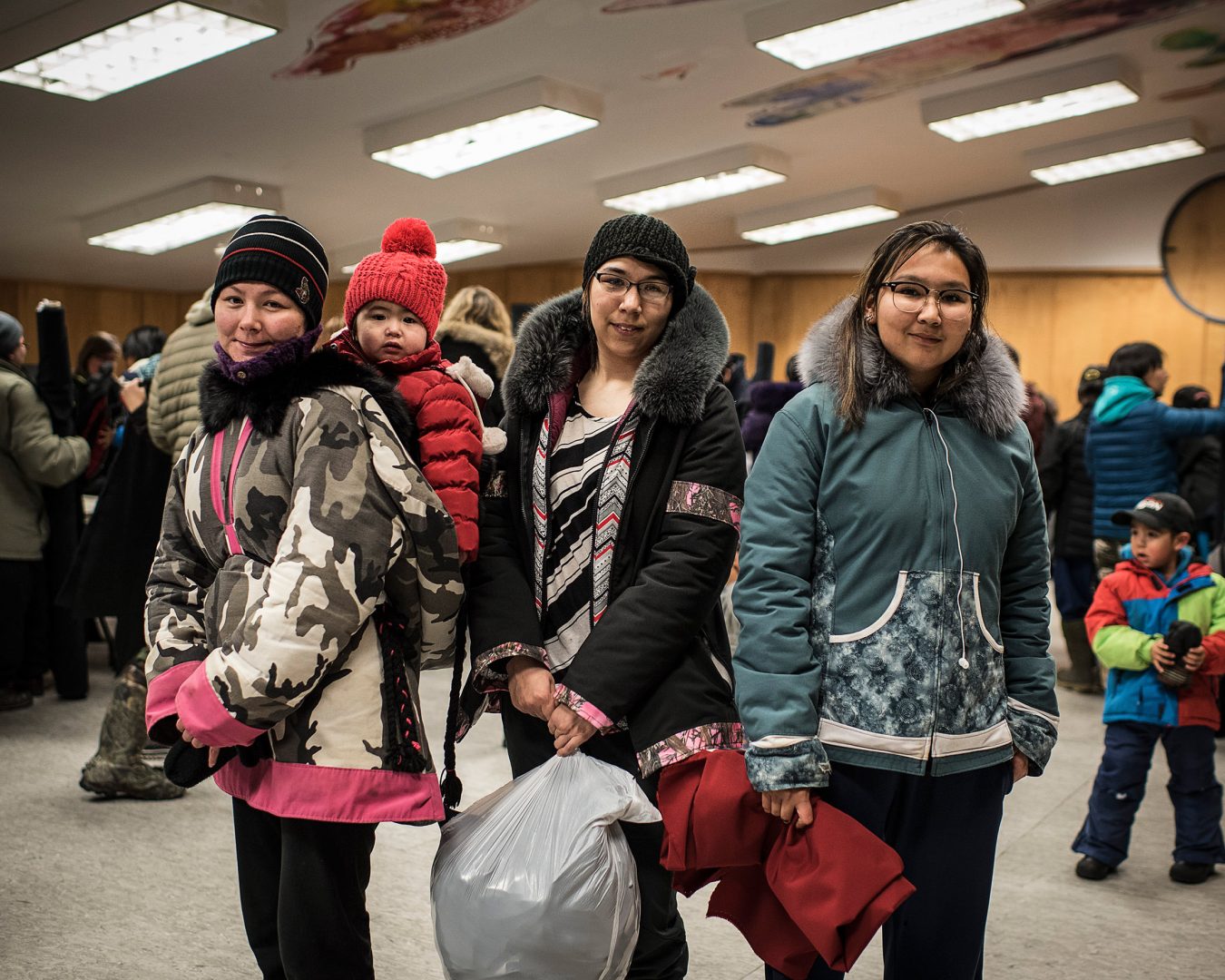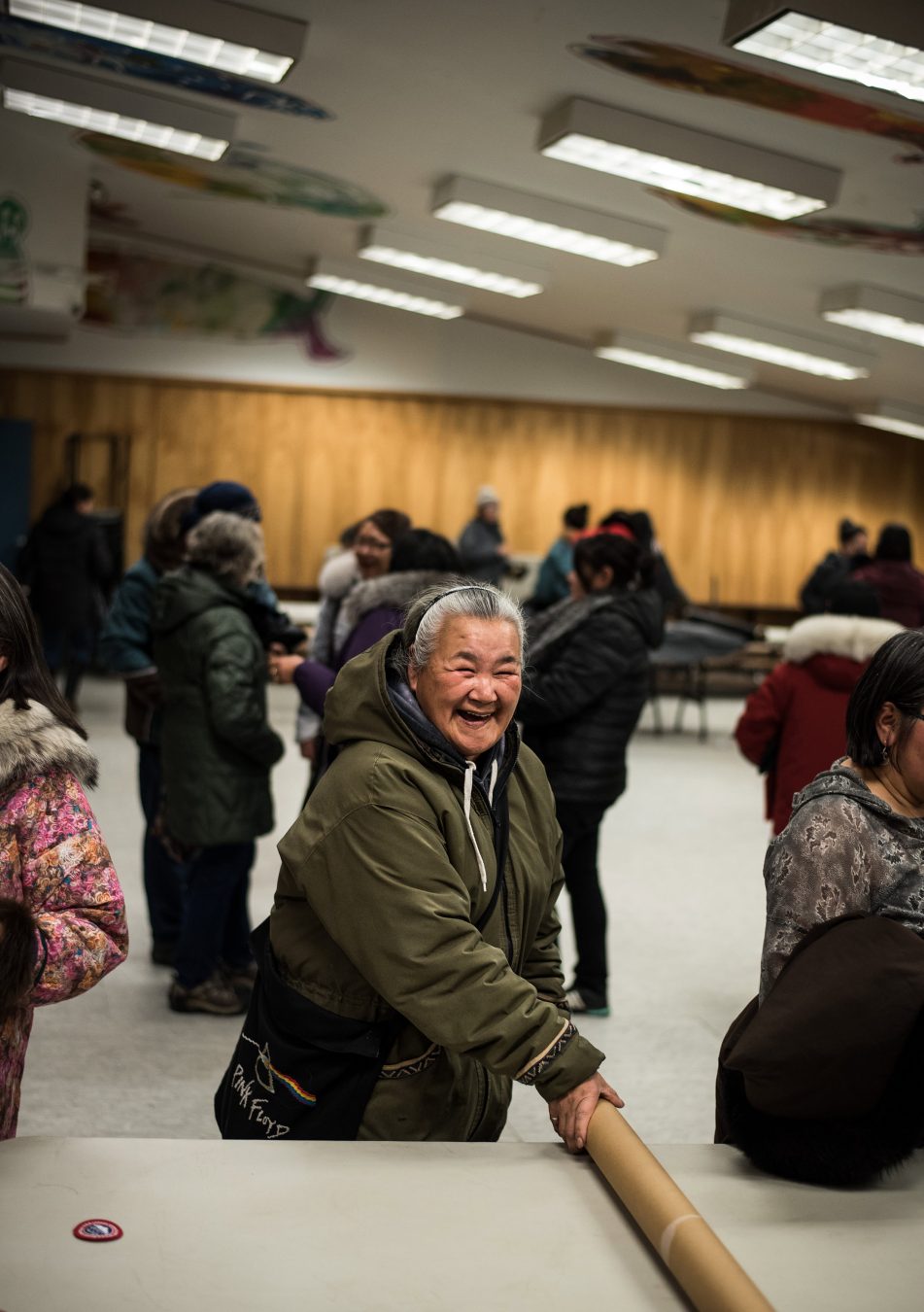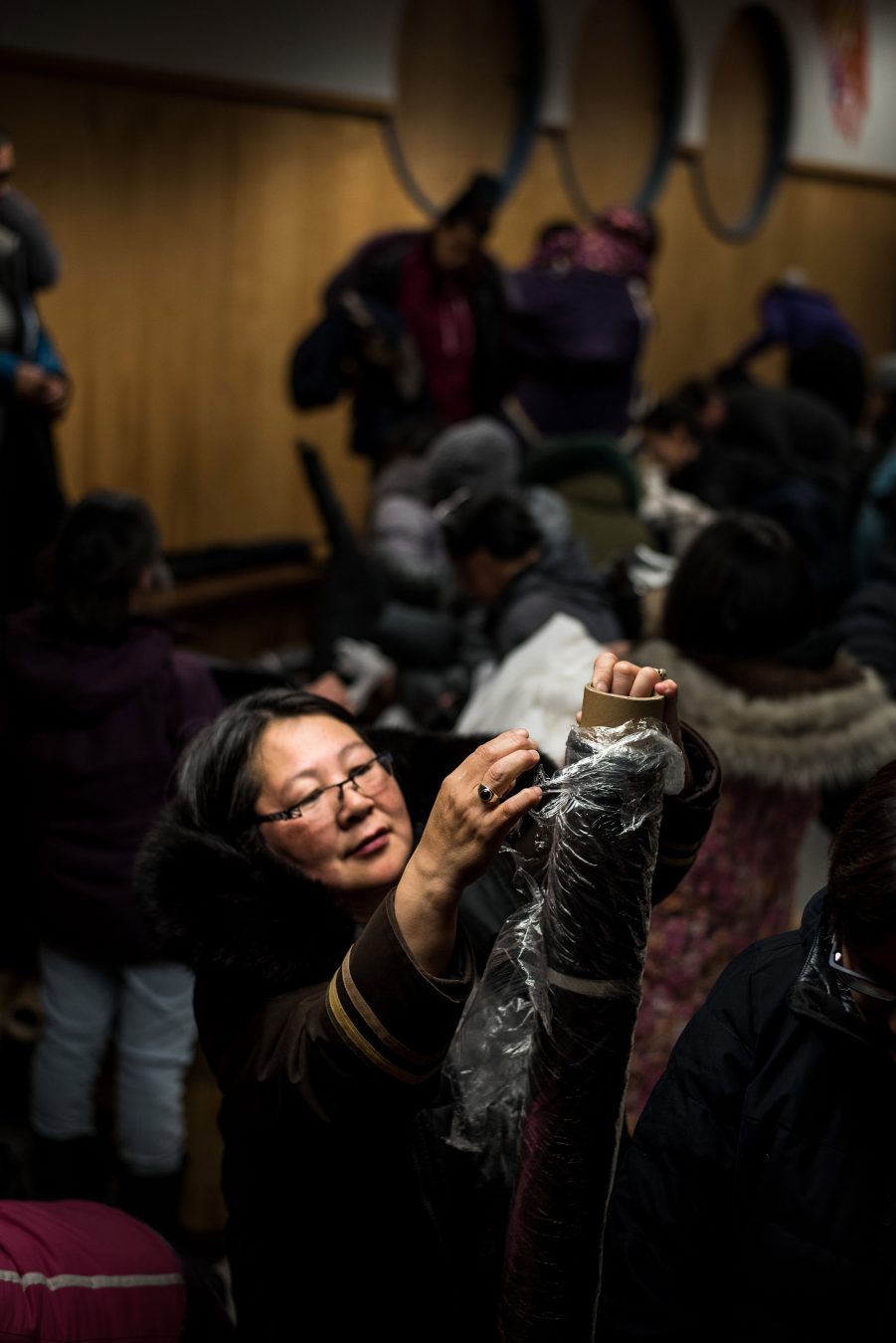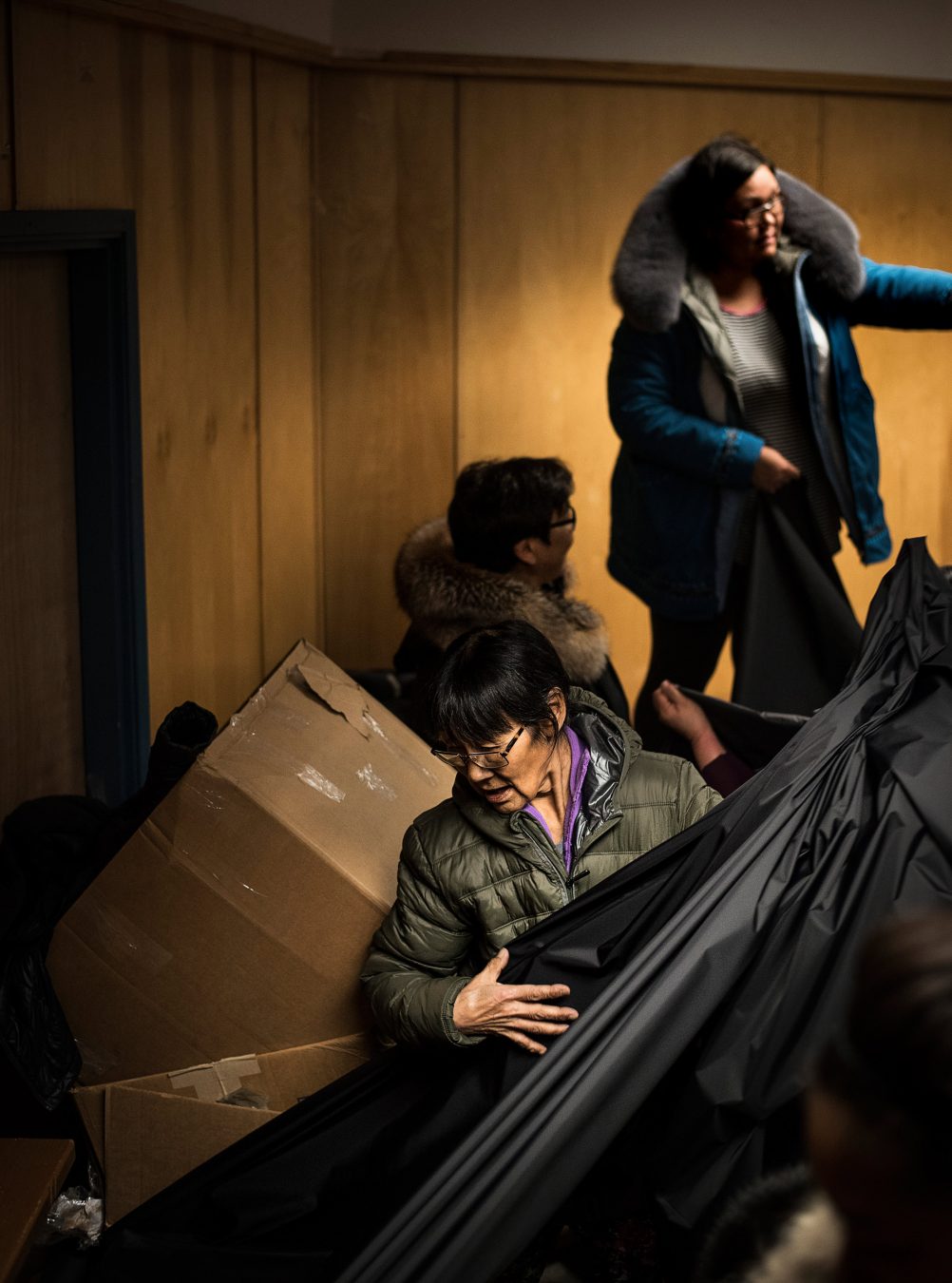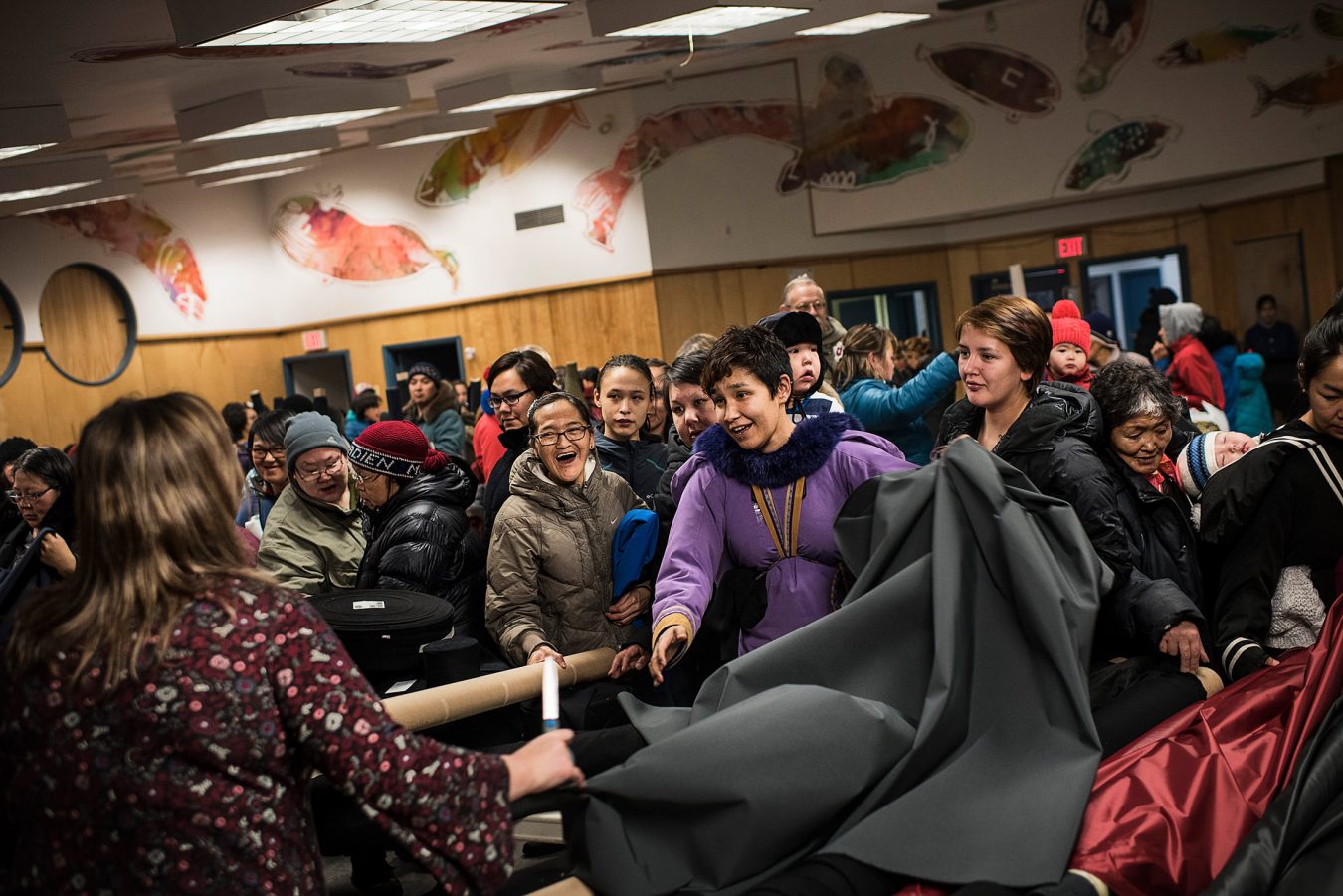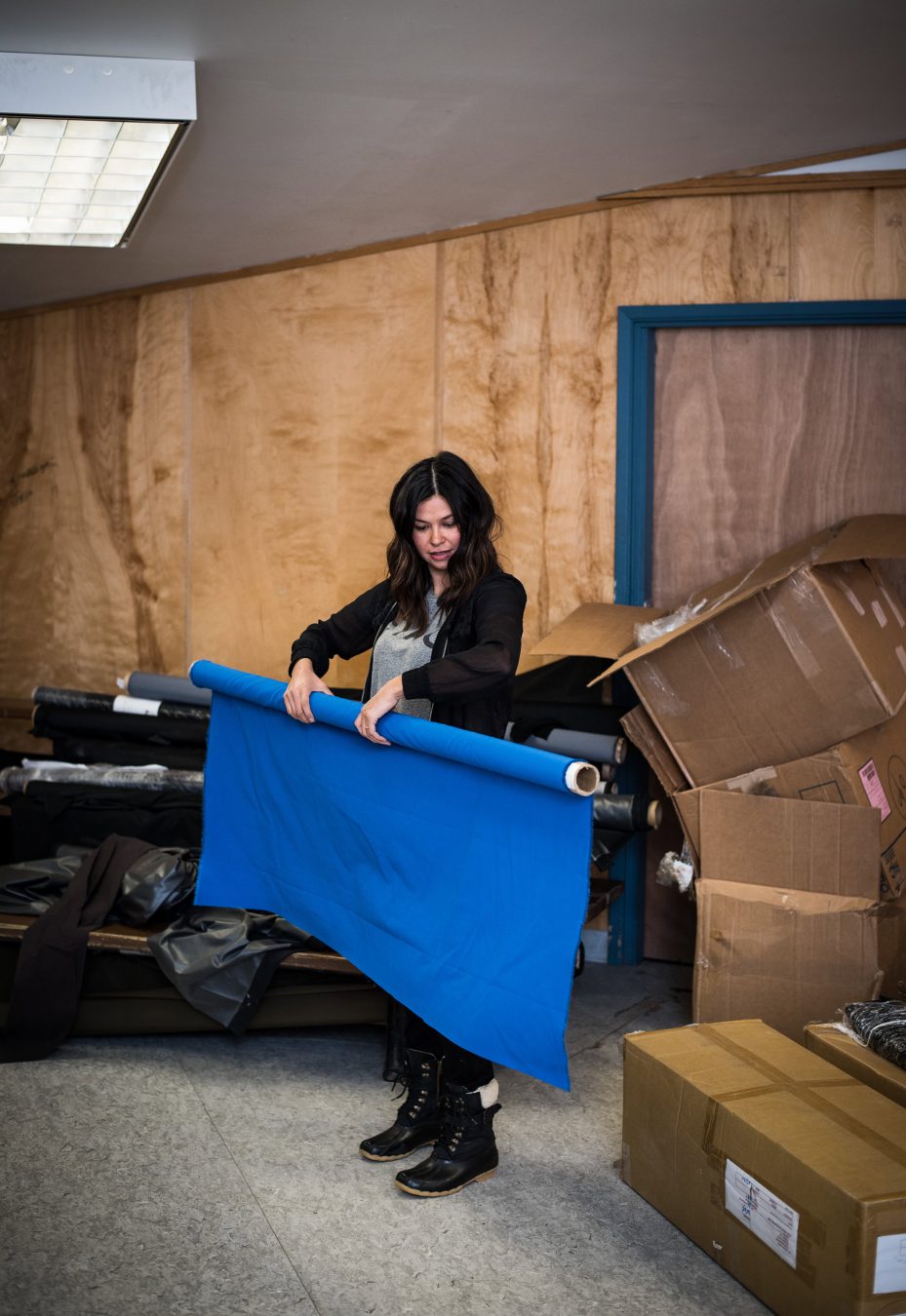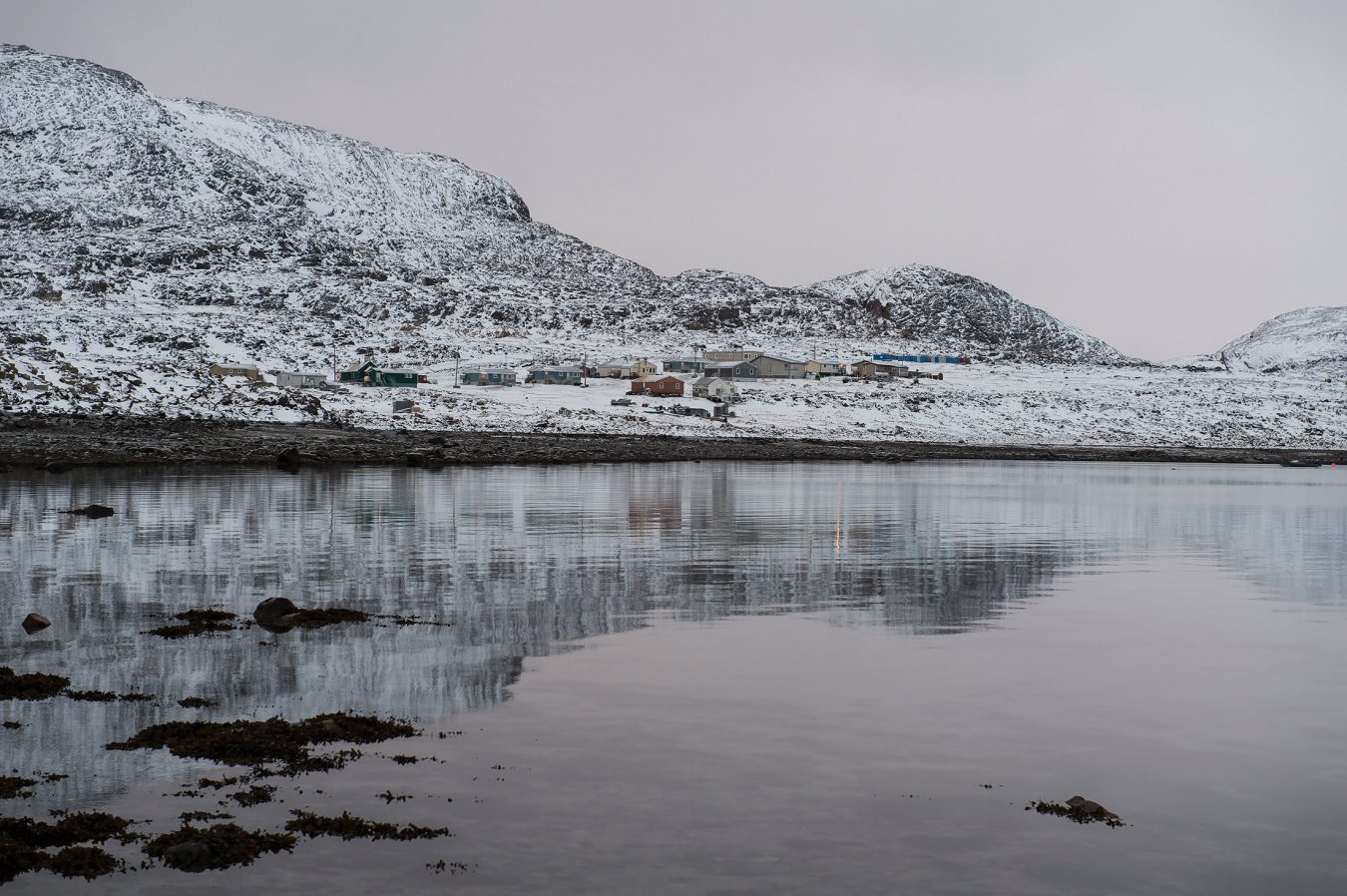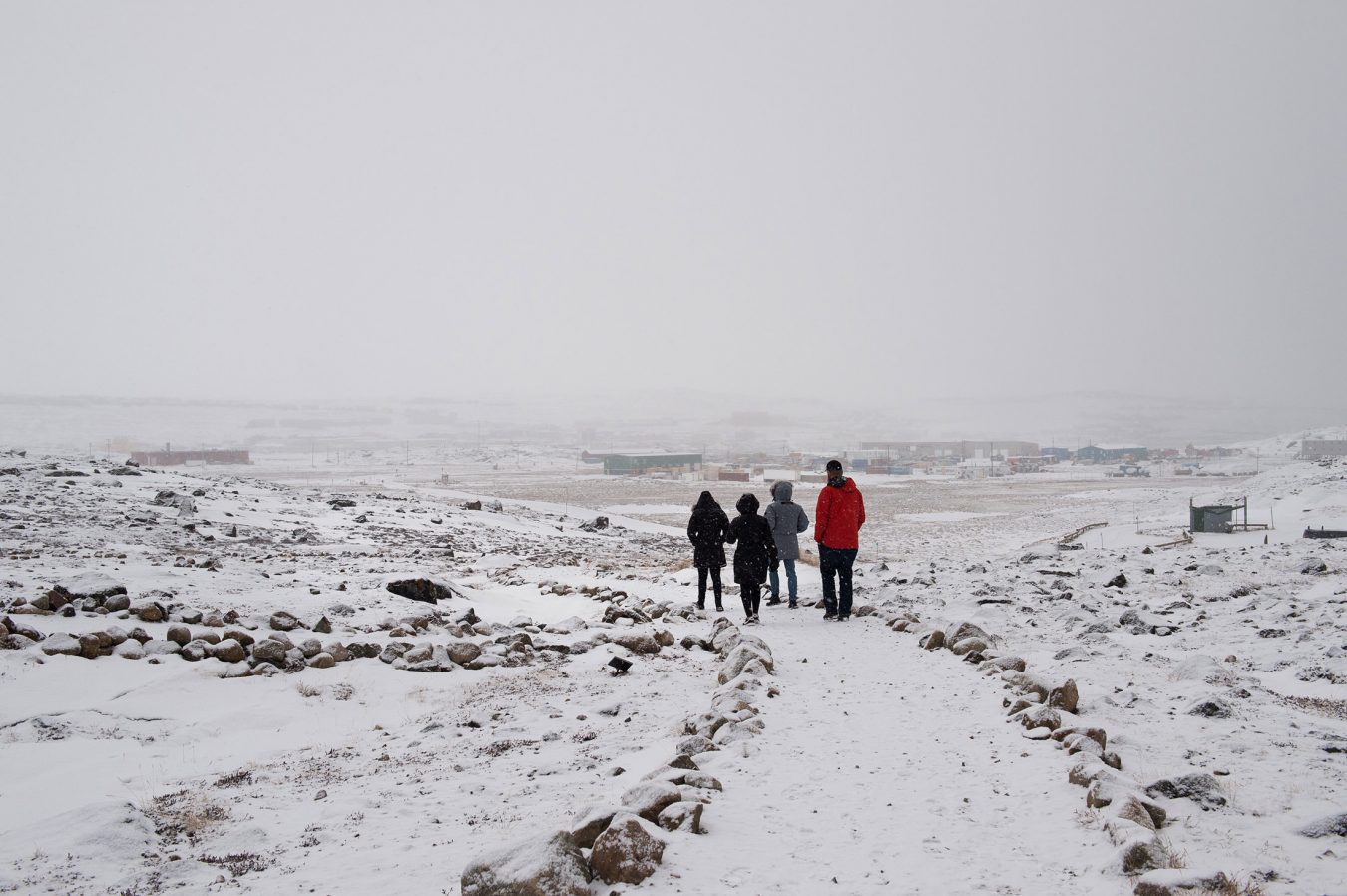Eight months out of the year, it’s freezing or well below freezing in Cape Dorset, Nunavut, and that makes a parka compulsory. The warmest of winter coats, unsurprisingly, was born in the Arctic, invented by the Inuit indigenous to Northern Canada, Alaska, and Greenland. For the better part of history, they were measured using hands and fingers, and constructed of layered caribou skins sewn together by dried sinew. One assumes that these days fabric is easier to track down than caribou, but that’s not entirely true on a remote island hamlet of 1,400 people.
Shipping to this part of the world is expensive—nearly $10 a kilogram plus taxes and surcharges by air—which means sewing supplies are both costly and scarce. But on this particular day, several thousand metres of fabric have arrived at Cape Dorset’s Community Hall. It’s all here for one of outerwear brand Canada Goose’s yearly Resource Centre events, in partnership with First Air, which provide free materials to Inuit sewers so they can make coats for family and friends. Launched in 2009, the idea was born out of the brand’s Baffin Anorak collaboration with Pond Inlet seamstresses Meeka Atagootak and Rebecca Killiktee. While the two were touring Canada Goose’s Toronto factory, they picked up production scraps and asked to bring them home to use—instead, they were sent back with a box of extra fabric, followed by pallets for the rest of their community.
There are a couple hundred women waiting today, and even though the volunteers can’t cut the fabric rolls fast enough, it’s more civilized than a Saturday at Costco. One of the first in line is 23-year-old Sindy Tammy Kenneally. The jacket she’s wearing has patterned bands around the sleeves and hem, and a fluffy fur ruff that looks forest green when it catches the light—she made it herself, as well as the ones her two sisters are wearing. With a greyscale camo body and hot pink trim, her older sister Crystal’s is a modern take on the traditional amauti, a pullover coat with a back pouch underneath the hood to carry and keep a baby warm. Mostly self-taught, Kenneally made her first parka at 14, and has since made 15 or so. “I think what inspires my design,” she says, “is how different my style is from the people of Cape Dorset.”
A parka’s design was once a signpost of sorts, a visual signifier of which community its wearer was from. That has since changed, but the coat that 62-year-old Ida Ayalik McWilliam has on stands out—and that’s because she is from the west. Hers is a Mother Hubbard, so called for its long-pleated hem, with wolverine fur cuffs and a fanned wolf fur ruff referred to as a sunburst. The most modern detail is a multi-coloured lace overlay, which she proudly declares she scored for $5 a metre.
There are other amautis in the crowd, a few of which are the handiwork of 64-year-old Ragee Killiktee. Complete with the traditional longer tail in back—a design feature for keeping a mother’s behind warm whilst sitting—the amauti is Killiktee’s specialty. “Too many years,” she says when asked how long she’s been making them, followed by “I don’t count,” to the question of how many, yet she’s precise with how long it takes to make one: “Twenty-two days.” The black one Linda Jaw is wearing has a pointed hood, typical to South Baffin Island women, that is big enough to cover baby and mother’s head. It is trimmed in fur, as are the ends of the pale blue braided cords that cinch up the hood and tie around the waist, and they happen to match a stripe appliqué that mirrors the rounded hemline. Jaw is hoping Killiktee will make her another one in different colours from the fabric she gets today.
Qupirrualuk Padluq, 71, made her own parka, and will make three or four for her children and grandchildren from her haul, which she totes out in a garbage bag as the event wraps up. The materials are gone in less than an hour, save for some thick batting. That will go to a nearby school for pattern-making practice, so another generation will carry on the skill required to craft a parka.
Read more from our Impact section.

